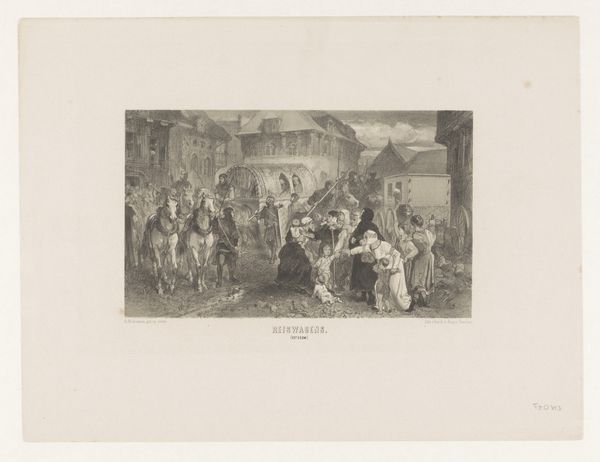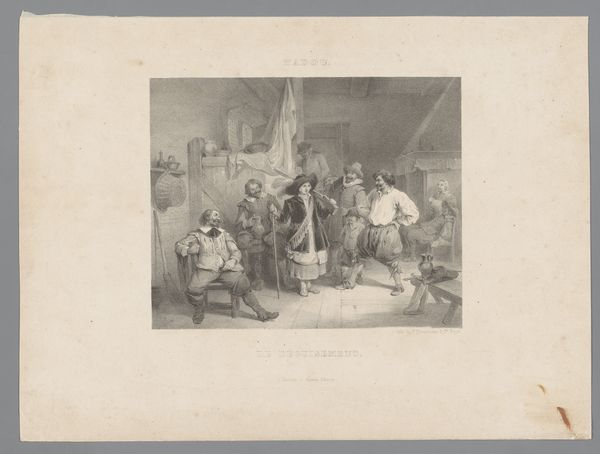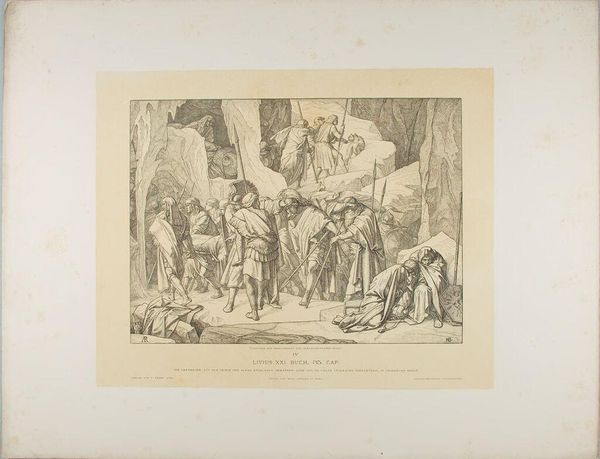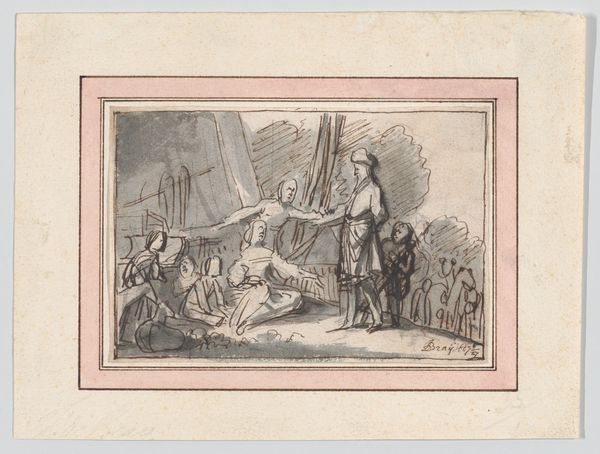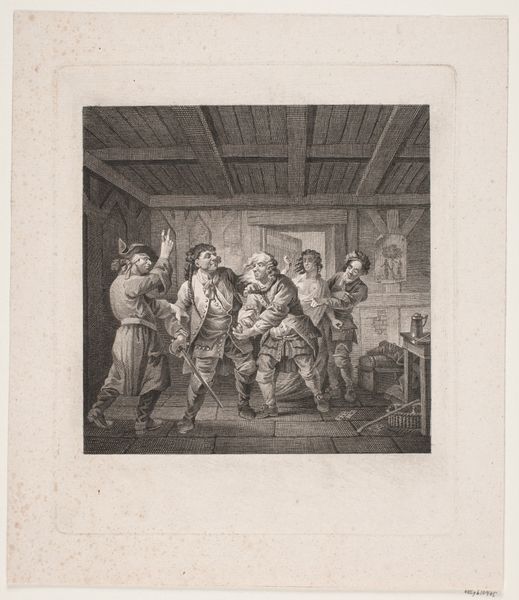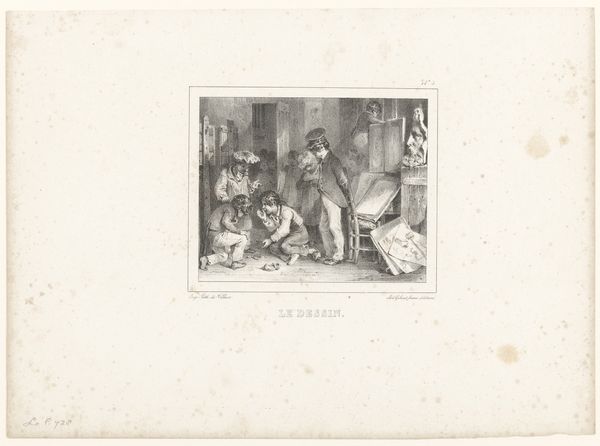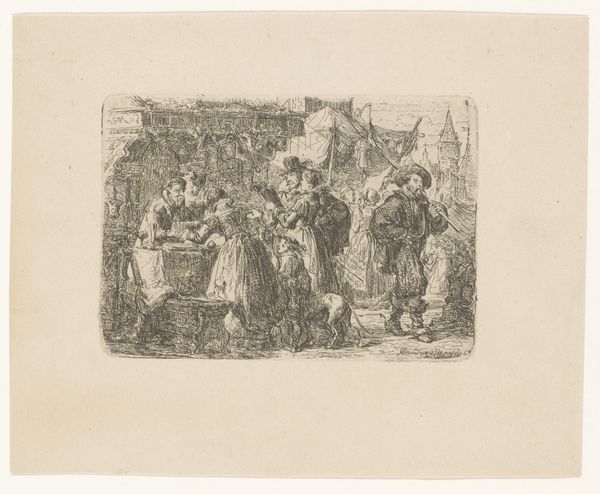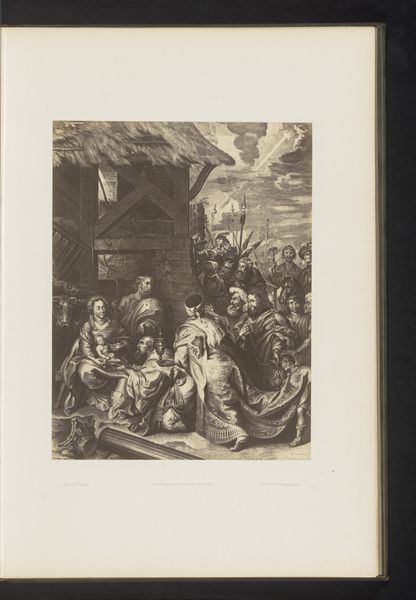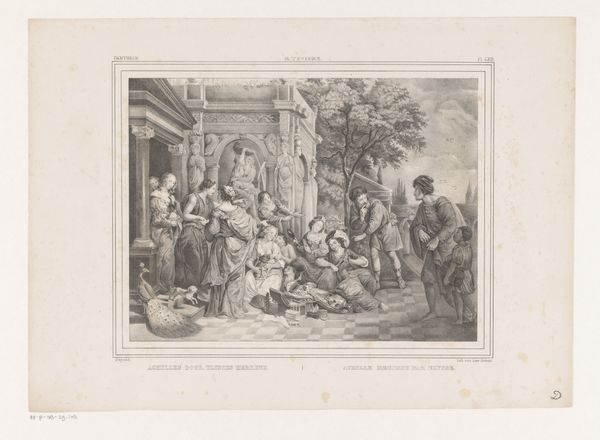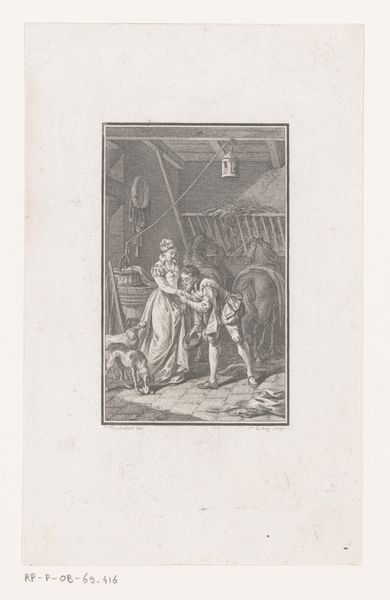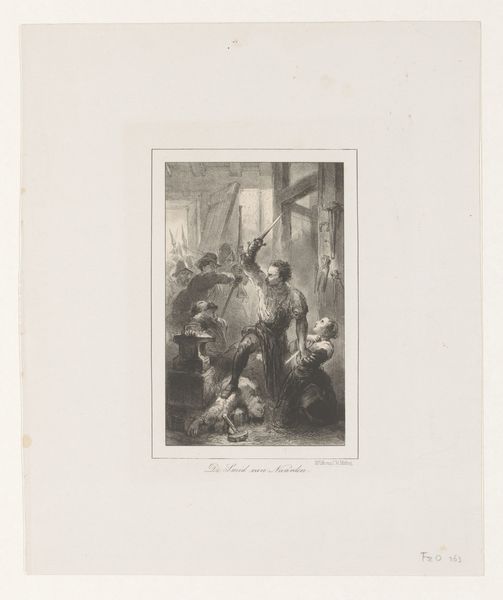
Copyright: Public Domain
Curator: Today we’re looking at a drawing by Eduard Ille from 1862 entitled "The Sanguine Person," currently residing here at the Städel Museum. Editor: My first thought? A joyful cacophony! All this controlled chaos, rendered in delicate ink and pencil, is delightfully overwhelming. Like a glimpse into someone's manic dream. Curator: It is definitely an image bursting with life. Eduard Ille’s piece speaks to a nineteenth-century interest in genre painting, but it’s also more specifically related to theories around temperaments. This piece likely connects to those popular ideas regarding character and physiology and also touches on questions around genius, gender roles, and social dynamics. Editor: Temperaments, eh? So, “sanguine” refers to that whole cheerful, optimistic personality type? He's literally haloed with good vibes here while a flustered mother seems to negotiate costs with a peddler as she’s surrounded by playful, if disheveled children! Curator: Precisely. This work reflects how society attempted to categorize, and to an extent, control or prescribe modes of being through scientific language but, if we consider how gendered certain temperaments were deemed to be and still are, can we not assume there's something more pernicious behind it than scientific fact? Editor: And of course, that's the rub. All that labeling! Here, the artist shows us this guy’s internal and domestic world. There's a violin, a suggestion of artistic pursuits, and a very cozy chaos to this home that to me screams of abundant, embodied imagination! I mean look at this guy. He could be interpreted to be totally at odds with any real economic sense…perhaps as something 'less than'. Curator: Exactly. And looking closely, note Ille's technical skill: the fine lines and cross-hatching create depth and texture, animating the entire scene and prompting us to examine power structures within romantic views about art, poverty and "success". The detailed faces, the carefully rendered clutter, everything invites us to dissect it. Editor: It truly does. This piece doesn’t just show; it actively involves us in questioning these supposed fixed types. Art history’s cool like that—showing the mirror so we may ask “How have we grown from there… or have we, at all?” Curator: Indeed, it is the reflection that matters most. Editor: You got it.
Comments
No comments
Be the first to comment and join the conversation on the ultimate creative platform.
